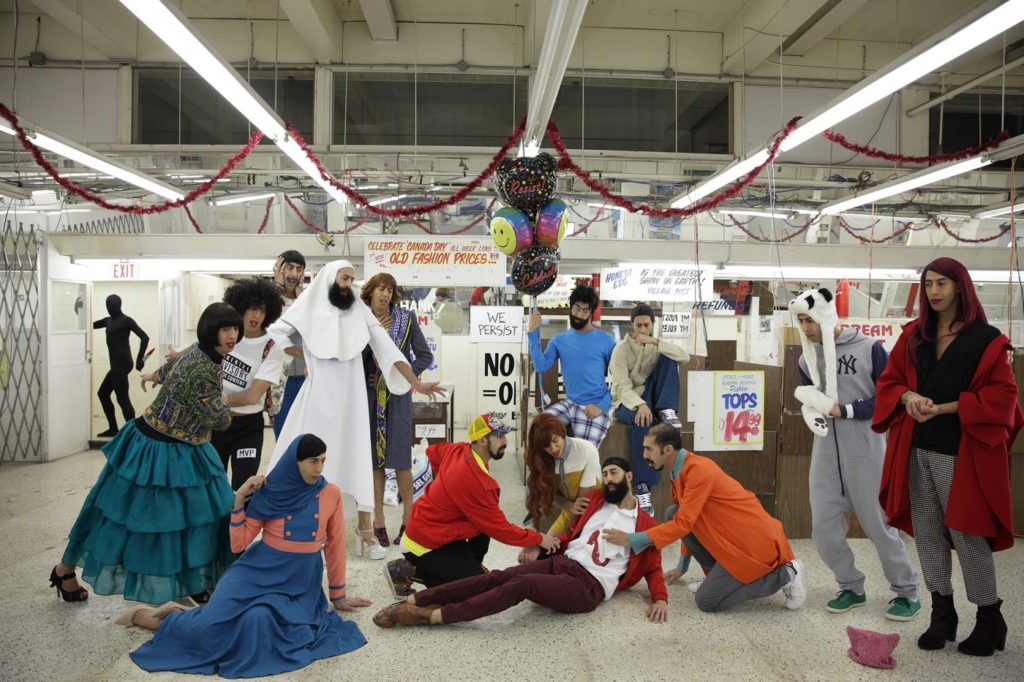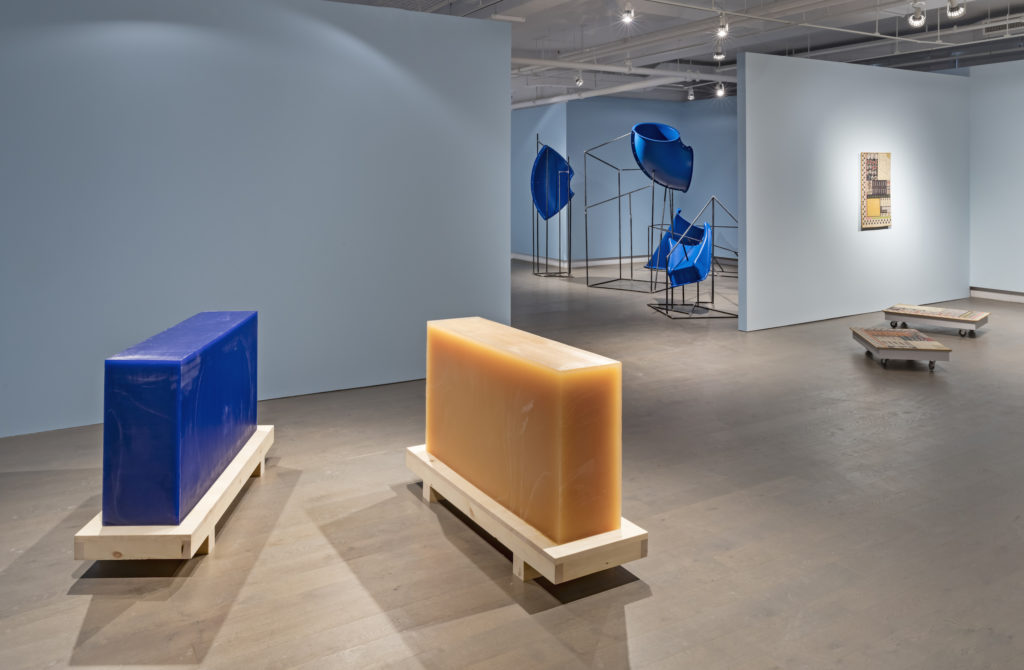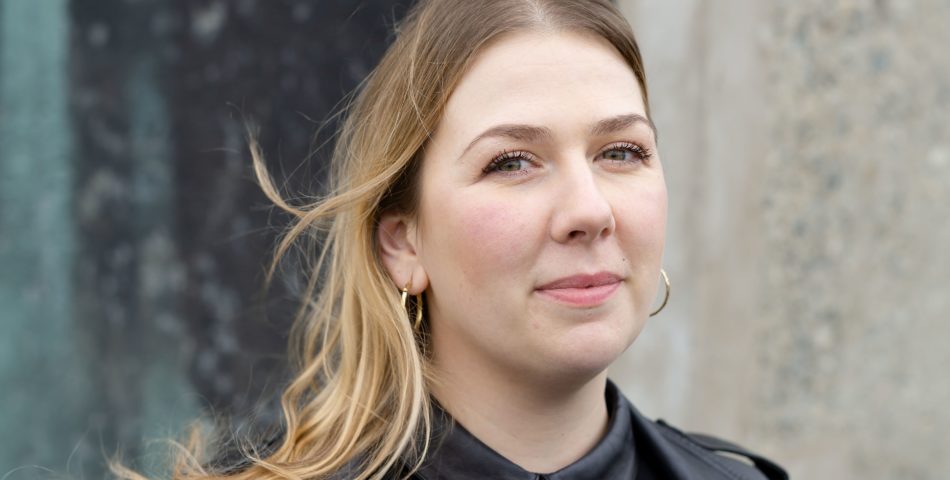The curator/director of the Koffler Gallery is originally from Bucharest. She launched the gallery’s new venue at Artscape Youngeplace six years ago, with a curatorial program that continues to foster new artwork, cross-disciplinary explorations, and critical dialogue. Partners in Art is a funder of the exhibition Undomesticated which runs until November 12, 2019.
How did your career in art begin?
I don’t remember a time when I wasn’t interested in art. My earliest memories about how I spent my time as a child (before school and other activities began to interfere) are of either dancing to classical music or drawing my favourite stories (The Little Mermaid, Cinderella…). There was never any question that I would be interested in anything else, and any attempts on my parents’ part to steer me towards a more “secure and lucrative” field were dropped pretty fast. I made the decision to move to a visual art focused school in grade 6. I passed the admission exam, and that became my path, even if I had no idea yet how that could translate into a career. Since I lived in Romania under a communist dictatorship, the future was not bright in any field of activity. I veered for a while into theatre design, then once the country opened up after the fall of the Iron Curtain, I went to study abroad and returned to studio practice in a BFA program in Washington D.C. at the Corcoran School of Art. I then entered the gallery education field, after doing an MFA at SUNY Buffalo and moving to Toronto, and eventually shifted towards curatorial practice.
When did you know you’d have a career in art?
I’ve actually never thought of it in these terms, as a career or job or profession. It’s a way of life for me, a way of being in the world and of thinking about it, which defines me maybe more than it should. In terms of the practical things that led me where I am today, there were both inner drives and external factors that steered me in this direction, a combination of reasons that motivated me to learn, to explore, to move from one continent to another, adopt a foreign language, and to dare things I didn’t know yet I was capable of doing. And I was lucky to have smart, supportive friends and role models who encouraged me along the way and who knew before I did that I could do this work.
What was your first successful art project?
Success is not easy to define in the curatorial field. What makes an exhibition successful? The number of people who attend it? The positive responses of the visitors? Its artistic quality? (And how is that defined…?) How well it serves and realizes or even expands the artists’ vision?
The first exhibition I ever curated (besides an early attempt in which I put together a group show of women artists in Bucharest together with my friend and teacher Stela Lie) was a site-specific project with BGL in the old Koffler Gallery space in North York. I had been at the Koffler for only two and a half years as the education coordinator (and de facto curatorial assistant), when Carolyn Bell Farrell, the senior curator, left for a position at the MacLaren. I took over her curatorial duties and continued to develop the exhibition program. I didn’t start gradually, I had to jump in and hit the ground running. So when I managed to pull off this first exhibition, it was a deeply significant moment for me – I knew I could do this work and that I loved it.
What do you consider your greatest achievement?
The exhibition we just opened, Undomesticated, is certainly the most ambitious and creatively challenging project I have ever done, both in scale and concept. It is also a labour of love, two years in the making. Underneath its conceptual framework, it is deeply personal – driven by an ongoing examination of the idea of home. As someone who has moved across borders several times and eventually came to Canada as an immigrant, the notion of belonging is vital. I am also deeply aware of the context of this land being the traditional territory of Indigenous peoples and constantly consider its history and what it means for someone like me to be here. These personal reflections have wide resonance in this time and place, and they lead to shaping programming at the Koffler that examines the idea of home at its core, in order to raise moral and ethical questions around our individual and collective notions of what home should be and represent. This questioning is at the heart of Undomesticated, bringing together a range of perspectives on these issues, from Indigenous to diasporic, as well as inter-generational points of view.
Is there a common thread reflected throughout your work?

I am primarily interested in supporting and collaborating with artists in the development of new work, often of a site-specific nature – maybe because my background is in studio practice and theatre. I probably take more creative risks and trust artists and their process to produce something that can’t be anticipated and guaranteed at the beginning of our collaboration. I am drawn to artistic practices that rely as much on the visual/sensorial experience as on conceptual rigour, and to artists who engage as deeply with materials as with intellectual ideas.
What do you do if you need inspiration?
I read (literature not theory) and seek out the people whose work and minds nourish and provoke my own. But inspiration seems to come to me mostly when I try to fall asleep, in that space between consciousness and dreaming.
Which artists do you admire most?
I have a deep admiration for the artists I have been fortunate to work with. We get to spend a lot of time in conversation and exchange ideas over several years, building trust and understanding. I gain even more respect and appreciation for what they do in the course of these collaborations. Recognizing the drive, intelligence and dedication that motivates their work and compels them to give so much of their time and knowledge, often forsaking well-being, always impresses me profoundly.
Is there an artist that you like that would surprise people?
Morandi? Goya? But those who know me do know that about me…
What advice do you have for aspiring curators?
To learn to listen well. I think it’s one of the most necessary qualities, especially in the work we do with artists, but also with audiences. Other than that, to build resilience, as it is not an easy field to find a job, and when you do find a job it will demand a lot from you, both emotionally and physically.
Who would you want to create your portrait?
Hmm… as a painting Christian Hidaka, as a photographic portrait Dainesha Nugent-Palache or Richard Rhyme.
What has been your biggest challenged working with the 24 artists in Undomesticated?
It has been an enormous pleasure, even if also an enormous task, to work on this project. All the artists in the exhibition were incredible and wonderful to work with, and I am deeply grateful to them all. Logistics were difficult to manage on my own, as well as keeping track of communications with all involved. A big challenge was being able to plan and organize the artworks in the exhibition, imagining the way they would eventually come together without knowing what the space would ultimately look like until the very last few days of install. But I had the most amazing partner in crime in developing and realizing the conceptual and visual/architectural aspects of the project – Nicolas Fleming, who is the art director, architect, co-curator, lead installer (with an incredible team of superheroes) and also artist in the show. It was from the encounter with his work and his way of thinking about materials and space that this show took shape.
What surprised you most about working on the show?
The final result was to a great extent surprising to me (and probably to Nico too) because for the longest time it only existed partially in my mind and partially in his, so when it all finally came together in an embodied form it was something neither of us had fully been able to visualize beforehand. Turns out it worked beautifully! It could have never happened without the trust we had in each other, but also without the trust of the artists we invited to be part of the project, who enthusiastically allowed us to present their work in a completely new way, which is not at all a traditional type of exhibition display.
Having curated at the Koffler for over 12 years, do you have a favourite exhibition?

That is a hard question to answer… I get so invested in all the projects I do, I wouldn’t do them if I wasn’t, and each one challenges and inspires me in unique ways. Besides Undomesticated, I loved the immersive, stunning painting and sculpture installation that Christian Hidaka and Raphaël Zarka created this summer, Peter’s Proscenium. I loved Iris Haussler’s project at Honest Ed’s, which started a wonderful relationship with the iconic store until its closure, when 2Fik did an amazing performance and created a historic photographic piece. I loved Howard Podeswa’s titanic painting installation that tackled the notions of heaven and hell in relation to our current troubled times; Penelope Stewart’s incredible beeswax installation that was both an overdose for the senses and a meditation on our recklessness towards the environment; Nicole Collins’ moving reflection on loss and resilience; Ghazaleh Avarzamani’s sculptural and textile works that examined the role of play in shaping our constructions of knowledge; Yonder which explored the experience of immigration… I can keep going!
How did you hear about PIA?
I have known about PIA for a long time as an organization that provides so much support to artists and institutions in Toronto’s artistic community and beyond, but I think the first time I met the group and got to know it better was when your members came for an educational visit at Honest Ed’s for Iris Häussler’s site-specific project, Honest Threads. We were then fortunate to receive PIA support for the exhibition Yonder, and now for Undomesticated. Both of these projects were the Koffler Gallery’s most ambitious in scale and therefore budget, and we would not have been able to produce these exhibitions as envisioned without PIA’s generous contribution. Thank you for that!
Follow the Koffler Gallery and Mona Filip
Instagram @kofflerarts
Instagram @monafilip
